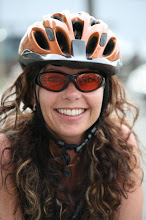I think BC is making head ways for cyclists...
Richard Campbell: Include cycling in economic-stimulus plans
Vancouver cycling activist Richard Campbell wants the public to badger politicians to include cycling infrastructure in any economic-stimulus packages.
Shortly before Christmas, Campbell wrote a thoughtful blog posting with a headline, “billions for bikes beats band-aids”.
“In a world shaken to the core by climate change, volatile fuel prices, rising obesity rates and a collapsing economy, there has never been a better time for cycling,” Campbell noted. “What is possible will only be limited by our vision and execution.”
He wrote that transit and rail projects are necessary, but they also take years to plan. Cycling infrastructure, on the other hand, can be done now when the economy needs a jump-start.
Campbell correctly pointed out that politicians aren’t interested in small projects that nobody will notice.
“Be sure to push for high-quality cycling facilities that people want and will use,” he stated on his posting. “This tends to be paths and cycle tracks, like in Amsterdam and Copenhagen that are separated from cars. There is little evidence that even bike lanes are effective at encouraging more people to cycle. By pushing for what people actually want, you will find that politicians are likely to be more receptive in spite or even because of the additional cost.”
In October, the British Columbia Cycling Coalition submitted a four-page brief to the legislature's finance and government services committee calling for accelerated investments in cycling infrastructure.
"While the recent commitment of $31 million in Bike BC funding over 3 years is a significant improvement over previous funding levels for cycling, it will only begin to address the cycling facilities deficit that has resulted from the lack of investment over the last few decades," the document states.
Campbell is vice president of a cycling-consulting company, Third Wave Cycling Group, a director of the B.C. Cycling Coalition, and he's a founder of the Vancouver Area Cycling Coalition and Better Environmentally Sound Transportation.
Third Wave Cycling Group’s president is veteran cycling activist Jack Becker; the vice president and secretary is Paul Dragan, a former competitive cyclist and the founder of Reckless Bike Stores.
Found on Georgia Straight website at:
http://www.straight.com/article-177691/richard-campbell-include-cycling-economicstimulus-plans
